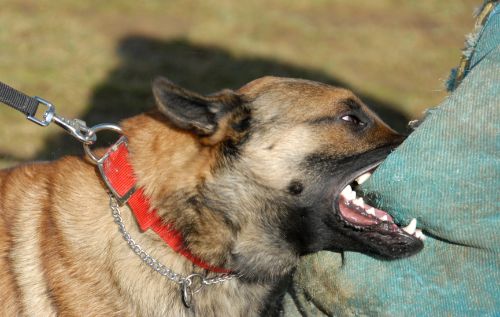In a world where dogs are beloved companions and cherished members of countless families, it’s difficult to imagine a scenario in which these faithful friends could cause harm. However, dog bite accidents are a reality that cannot be ignored, and Bexar County, Texas, is no exception to this unfortunate phenomenon. Amidst the concern and confusion that often arise from such incidents, it’s essential to separate fact from fiction. In this article, we’ll debunk common myths and misconceptions surrounding dog bite accidents in Bexar County, Texas, while shedding light on the legal requirements for addressing these situations.
Myth 1: “My Dog Would Never Bite Anyone.”
One of the most prevalent misconceptions is the belief that a dog’s demeanor or history exempts it from ever posing a threat. While it’s true that many dogs are friendly and well-behaved, any dog, regardless of breed or temperament, can bite under certain circumstances. Factors such as fear, provocation, stress, and medical conditions can all contribute to a dog’s unexpected aggression. Therefore, it’s important for dog owners to exercise caution and never assume that their pet is immune to such behavior.
Myth 2: “If a Dog is on its Owner’s Property, It Can’t Be Held Liable.”
Another common myth is that a dog is only liable for its actions if it ventures beyond its owner’s property. In Bexar County, Texas, this is not entirely accurate. The “one-bite rule” may apply, which means that if a dog has previously bitten someone or displayed aggressive behavior, the owner could be held liable for subsequent incidents, regardless of where they occur. Furthermore, Texas law imposes a strict liability statute for dog bites, holding owners responsible for injuries their dogs cause, even if the dog has never shown prior aggressive behavior.
Myth 3: “Provocation Always Negates Liability.”
It’s often assumed that if someone provokes a dog, any resulting bite is their own fault and the owner isn’t liable. While provocation can indeed be a factor in assessing liability, it’s not a blanket defense for dog owners. Texas law acknowledges that provocation might mitigate liability, but it doesn’t necessarily absolve the owner of all responsibility. The court will consider the degree of provocation, the nature of the dog’s response, and whether the owner took reasonable steps to prevent harm.
Legal Requirements in Bexar County, Texas:
If you or someone you know has been involved in a dog bite accident in Bexar County, Texas, it’s important to understand the legal requirements and potential avenues for seeking compensation:
- Strict Liability: As mentioned earlier, Texas enforces strict liability for dog bite cases. This means that a dog owner can be held responsible for injuries caused by their dog, regardless of whether the dog has a history of aggression.
- Negligence: In addition to strict liability, victims of dog bites may also pursue a claim based on negligence. If the owner failed to exercise reasonable care in controlling their dog, such as not properly restraining it in public, a negligence claim could be pursued.
- Statute of Limitations: It’s crucial to be aware of the statute of limitations for filing a dog bite claim in Bexar County, Texas. Generally, you have two years from the date of the incident to file a lawsuit. Failing to meet this deadline could result in losing your right to seek compensation.
- Comparative Negligence: Bexar County follows a modified comparative negligence rule. This means that if the victim’s own actions contributed to the incident, their compensation may be reduced based on their percentage of fault. If the victim is found to be more than 50% at fault, they might be barred from recovering any compensation.
Understanding Dog Behavior and Prevention
Beyond legal considerations, it’s crucial to understand dog behavior and take preventive measures to avoid dog bite accidents in the first place. Educating yourself about canine body language and following safety guidelines can significantly reduce the risk of such incidents.
Recognizing Canine Body Language:
Dogs communicate their emotions and intentions through body language. Understanding these cues can help you gauge a dog’s mood and respond appropriately. Some important signs to watch for include:
- Raised Hackles: A dog with raised hackles might be agitated or feeling threatened.
- Growling or Snarling: These vocalizations are clear warnings that a dog is uncomfortable or anxious.
- Tail Position: A tucked tail can indicate fear or submission, while a raised, stiff tail might signal excitement or aggression.
- Avoiding Eye Contact: If a dog avoids eye contact or averts its gaze, it could be trying to defuse a potentially tense situation.
While we all hope for the best in our interactions with dogs, it’s essential to be prepared for unexpected circumstances. Debunking common myths about dog bite accidents in Bexar County, Texas, can help individuals understand their rights and responsibilities when faced with such situations. Remember, seeking legal advice promptly is crucial to protecting your interests and ensuring that you receive fair compensation for your injuries and damages.
If you’ve been involved in a dog bite accident in Bexar County, Texas, don’t hesitate to reach out to Rush & Gransee, L.C. Our compassionate and knowledgeable team is ready to guide you through the legal process and advocate for your rights.